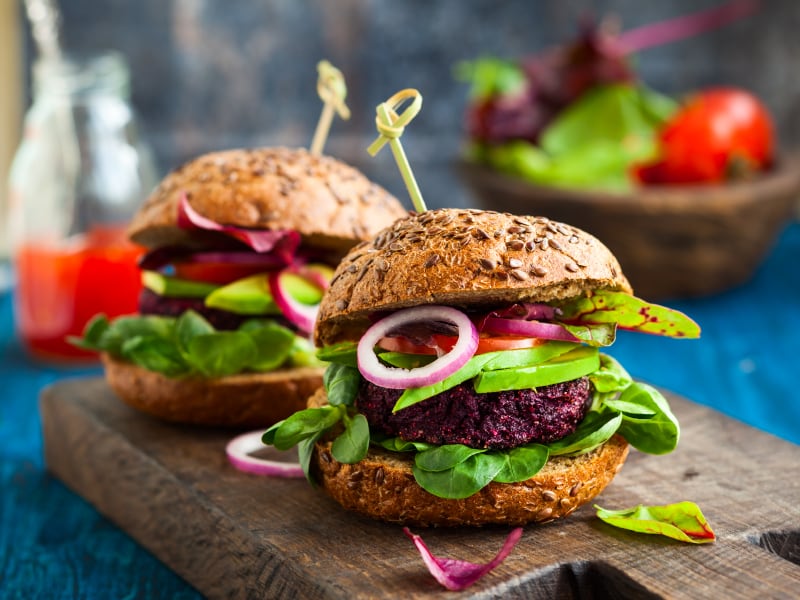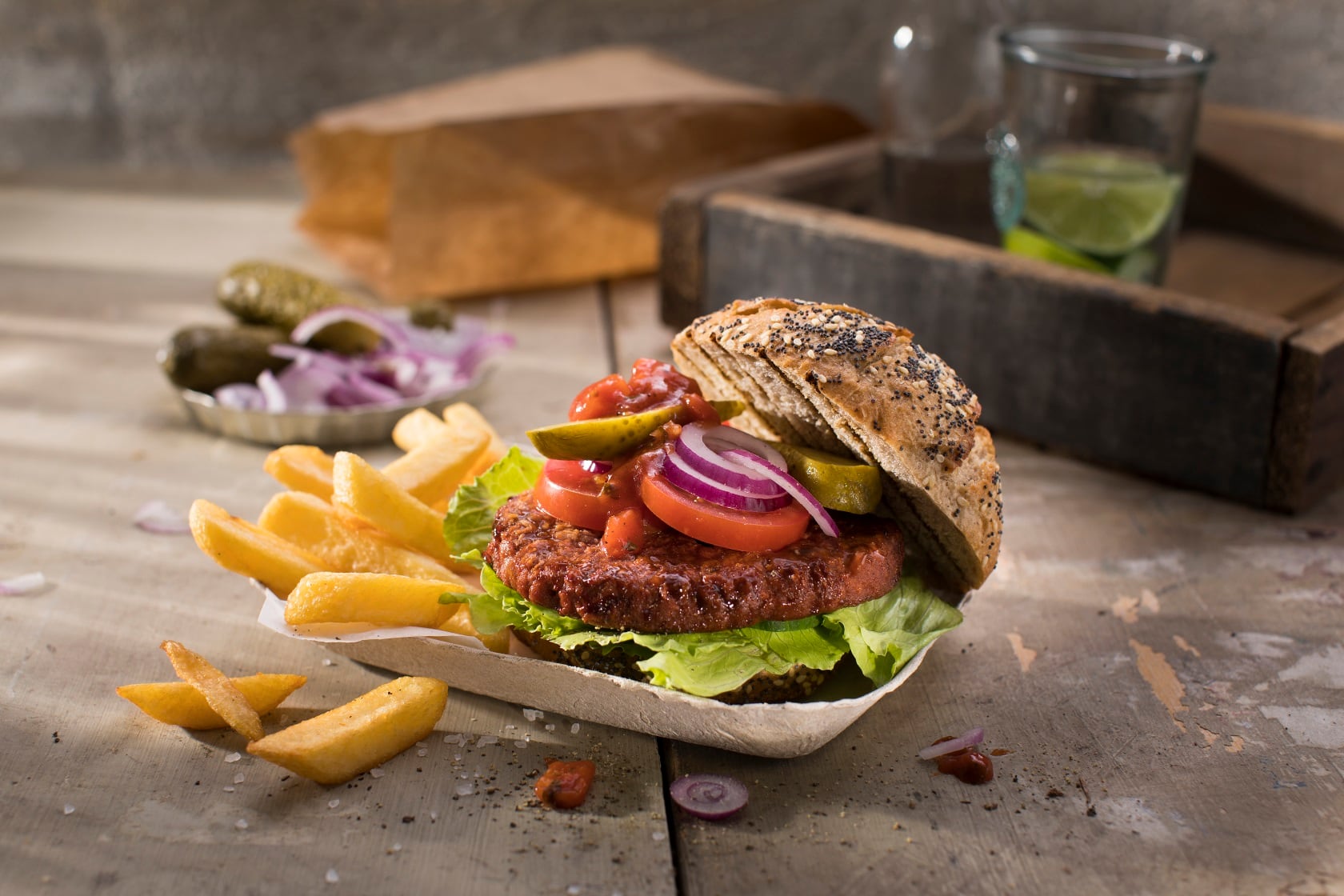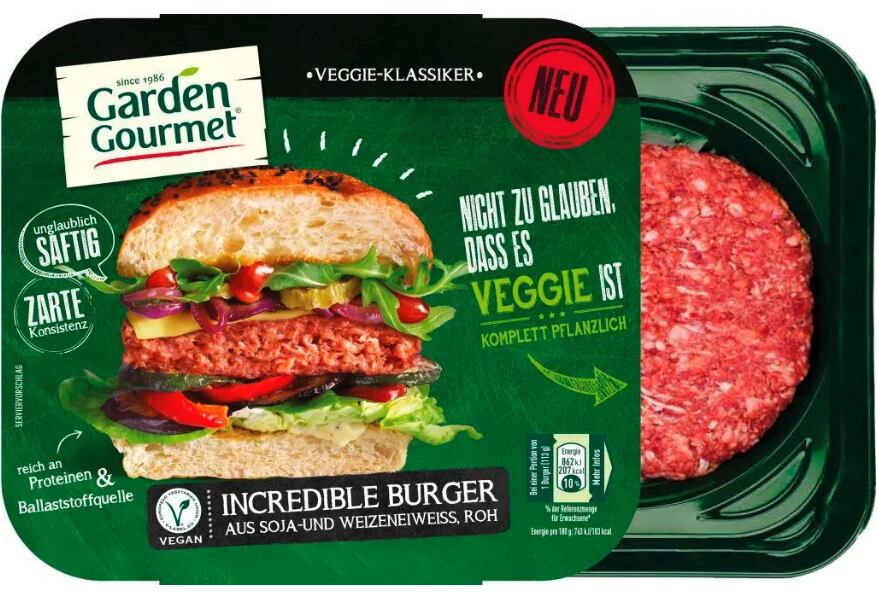The meat substitute market is expected to reach a global venue of $7.5bn by 2025, with a compound annual growth rate forecast at 7.7%, according to Allied Market Research. European markets dominated demand for meat substitutes in 2017, accounting for nearly 40% of global revenue.
The sector is dominated by products prepared from tofu, tempeh, textured vegetable protein, seitan, mycoprotein, and other plant-based sources.
Textured vegetable protein (TVP)-based meat substitutes occupied the largest market share of 35.8% in 2017, the research report revealed. TVP is the basic ingredient in most of the soy-based meat substitute products. In terms of growth, Seitan-based meat substitutes are projected to exhibit an impressive CAGR of 9.4%, owing to increase in adoption in the food service industry.
Taste and texture challenge
Major drivers supporting consumer interest in meat substitutes are the expectations that plant-based products are healthier and better for the environment.
Frequently, meat analogues are viewed as ‘gateway’ products enabling people to reduce meat consumption. They are particularly appealing to flexitarians, many of whom want to cut their meat intake without compromising on having a meat-like product centre plate.
“Our consumer research across Europe shows that consumers believe that plant protein are better for heart health, easier to digest and better suited to aid weight loss than animal proteins,” Dominique Delfaud, marketing, sensory and consumer research manager at flavours house Mane, observed.
However, Delfaud told FoodNavigator, barriers to uptake in the region remain “strong”. She suggested that price, taste, and cultural beliefs all limit uptake. Mane VP of strategic development, Luis Angel Fernandez, added that texture, stability and appearance represent significant challenges for food scientists working on alternative protein products.
Verity Clifton, applications technologist at specialist ingredients company Thew Arnott, also suggested that manufacturers are struggling to meet the sensory expectations of consumers, who want meat analogues that are virtually indistinguishable from their animal-based counterparts.
“The main issues being faced by manufacturers is the lack of willingness to compromise on texture, and the requirement for complete diets without the need for supplements,” she commented.
Clifton suggested that there is a degree of segmentation here: vegans who totally eschew meat products may be put off by ‘lifelike’ meat analogues, while for other meat-reducers the closer the profile to meat, the better. “Manufacturers need to consider the market sub-group they are aiming their products at,” she advised.
A question mark over health
While meat-free products have benefited from something of a ‘health halo’ in the past, this reputation is slipping as consumers come to demand cleaner labels and natural products and scrutiny of fat, salt and sugar content rises.
In pursuit of the desired taste, texture or mouthfeel – or to help mask some of the undesirable traits associated with plant proteins - some meat analogue products add salts, fats or sugars to compensate.
Clifton explained: “Lots of flavours and flavonoids require the presence of fat and or sugar for the palate to properly recognise them. As such, the addition of fats and sugars to typically low fat and sugar-containing products is necessary to impart the desired flavour profile. To then balance the flavour to ensure that savoury products do not appear sweet, manufacturers are required to add salt. The addition of salt also helps to promote the creamy/fatty notes more typical to meat products.”
While they may be meat-free, some meat analogue items are nevertheless ultra-processed foods – and there is a growing backlash against products that cannot demonstrate their clean label credentials.
Indeed, according to Mane’s consumer research, around one-fifth of European consumers said they would not buy vegan or vegetarian meat analogue products, citing concern over ‘trust’. “Around 20% of European consumers we’ve interviewed would not buy vegan or vegetarian products available in supermarkets because they don’t trust those products [because they are viewed as] too processed [or may] contain GMOs,” Delfaud revealed.
A ‘real opportunity’ to deliver quality
Food manufacturers in the meat analogue space must therefore focus on delivering products that have an improved nutritional profile, Samuel Russell, EMEA marketing manager at Univar Solutions, said.
“Nowadays, with the level of innovation in food ingredients it is difficult to justify high fat, sugar and salt content as a means of overcoming texture and taste challenges,” he told FoodNavigator.
“There are tools available that can remove fat whilst maintaining mouthfeel, replace sugar but keep the sweet and even reduce reliance on salt whilst boosting other nutritional properties. These options don’t need to compromise a ‘clean label’ either.”
But Clifton said that if food makers are trying to mimic the sensorial properties of meat using plant proteins, they will likely continue to rely on adding some fat, salt and sugar. “If manufacturers are aiming their products at consumers who are sometimes consuming meat, then the addition of fat, salt and sugar is likely still necessary. However, for products aimed at non-meat eating consumers, the use of spices and seaweeds, in savoury products could assist with flavour masking, while the use of starches and some fat mimetic fibres (i.e. inulin) to help impart the creamy notes associated with fat could be considered.”
She suggested that new ingredients development is opening doors for products that have a clean label profile as well as delivering on texture: "From a texture perspective, the advancements in textured plant protein products and the growing acceptance of more “natural” hydrocolloids is allowing manufacturers to produce more accepted products."
Mane’s Fernandez believes “the quality of vegan foods remains a big opportunity to be improved”.
“The taste challenge can be addressed by selecting the right protein replacer delivering the required nutritional profile and best sensory experience… The partnership between sustainable protein producers, flavour companies and FMCG is strategic and able to deliver fast to market solutions.
“A sustainable source of protein should be cost effective for the formulator and better for the planet. The amino acid profile, digestibility, allergen potential are critically important to characterise the nutritional value. The overall taste, texture, stability and appearance can be obtained through great knowledge of formulation and processing.”




